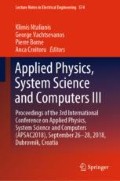Abstract
The automatic classification of maritime vessel type from low resolution images is a significant challenge and continues to attract increasing interest because of its importance to maritime surveillance. Convolutional neural networks are the method of choice for supervised image classification, but they require a large number of annotated samples, which prevents many superior models being applied to problems with a limited number of training samples. One possible solution is transfer learning where pre-trained models are used on entirely new predictive modeling, transferring knowledge between related source and target domains. Our experimental results demonstrate that a combination of data augmentation and transfer learning leads to a better performance in the presence of small training dataset, even in the a fine-grained classification context.
Access this chapter
Tax calculation will be finalised at checkout
Purchases are for personal use only
References
Liu, W., Wang, Z., Liu, X., Zeng, N., Liu, Y., Alsaadi, F.E.: A survey of deep neural network architectures and their applications. Neurocomputing 234, 11–26 (2017)
Wang, J., Perez L.: The effectiveness of data augmentation in image classification using deep learning. Technical report (2017)
Pan, S.J., Yang, Q.: A survey on transfer learning. IEEE Trans. Knowl. Data Eng. 22(10), 1345–1359 (2010)
Donahue, J., Jia, Y., Vinyals, O., Hoffman, J., Zhang, N., Tzeng, E., Darrell, T.: DeCAF: a deep convolutional activation feature for generic visual recognition. Technical report, arXiv preprint arXiv:1310.1531
Yosinski, J., Clune J., Bengio, Y., Lipson, H.: How transferable are features in deep neural networks? Adv. Neural Inf. Process. Syst. 27, 3320–3328 (2014)
Chollet, F.: Deep Learning with Python, 1st edn. Manning Publications Co., Greenwich, CT (2017)
Abadi, M., et al.: TensorFlow: Large-scale machine learning on heterogeneous systems. Software available from http://www.tensorflow.org (2015)
Solmaz, B., Gundogdu, E., Yücesoy, V., Koc, A.: Generic and attribute-specific deep representations for maritime vessels. IPSJ Trans. Comput. Vision Appl. 9, 1–18 (2017)
Ship Photos and Ship Tracker. http://www.shipspotting.com. Accessed 10 May 2018
Krizhevsky, A., Sutskever, I., Hinton, G.E.: Imagenet classification with deep convolutional neural networks. In: Advances in Neural Information Processing Systems, pp. 1097–1105 (2012)
Srivastava, N., Hinton, G., Krizhevsky, A., Sutskever, I., Salakhutdinov, R.: Dropout: a simple way to prevent neural networks from overfitting. J. Mach. Learn. Res. 15(1), 1929–1958 (2014)
Tieleman, T., Hinton, G.: Lecture 6.5-rmsprop: divide the gradient by a running average of its recent magnitude. COURSERA: Neural Netw. Mach. Learn. 4(2), 26–31 (2012)
Simonyan, K., Zisserman, A.: Very deep convolutional networks for large-scale image recognition. arXiv preprint arXiv:1409.1556 (2014)
Szegedy, C., Vanhoucke, V., Ioffe, S., Shlens, J., Wojna, Z.: Rethinking the inception architecture for computer vision. In: Proceedings of the IEEE Conference on Computer Vision and Pattern Recognition, pp. 2818–2826 (2016)
Chollet, F.: Xception: deep learning with depthwise separable convolutions. arXiv preprint, pp. 1610–2357 (2017)
He, K., Zhang, X., Ren, S., Sun, J.: Deep residual learning for image recognition. In: Proceedings of the IEEE Conference on Computer Vision and Pattern Recognition, pp. 770–778 (2016)
Author information
Authors and Affiliations
Corresponding author
Editor information
Editors and Affiliations
Rights and permissions
Copyright information
© 2019 Springer Nature Switzerland AG
About this paper
Cite this paper
Milicevic, M., Zubrinic, K., Obradovic, I., Sjekavica, T. (2019). Application of Transfer Learning for Fine-Grained Vessel Classification Using a Limited Dataset. In: Ntalianis, K., Vachtsevanos, G., Borne, P., Croitoru, A. (eds) Applied Physics, System Science and Computers III. APSAC 2018. Lecture Notes in Electrical Engineering, vol 574 . Springer, Cham. https://doi.org/10.1007/978-3-030-21507-1_19
Download citation
DOI: https://doi.org/10.1007/978-3-030-21507-1_19
Published:
Publisher Name: Springer, Cham
Print ISBN: 978-3-030-21506-4
Online ISBN: 978-3-030-21507-1
eBook Packages: Physics and AstronomyPhysics and Astronomy (R0)

